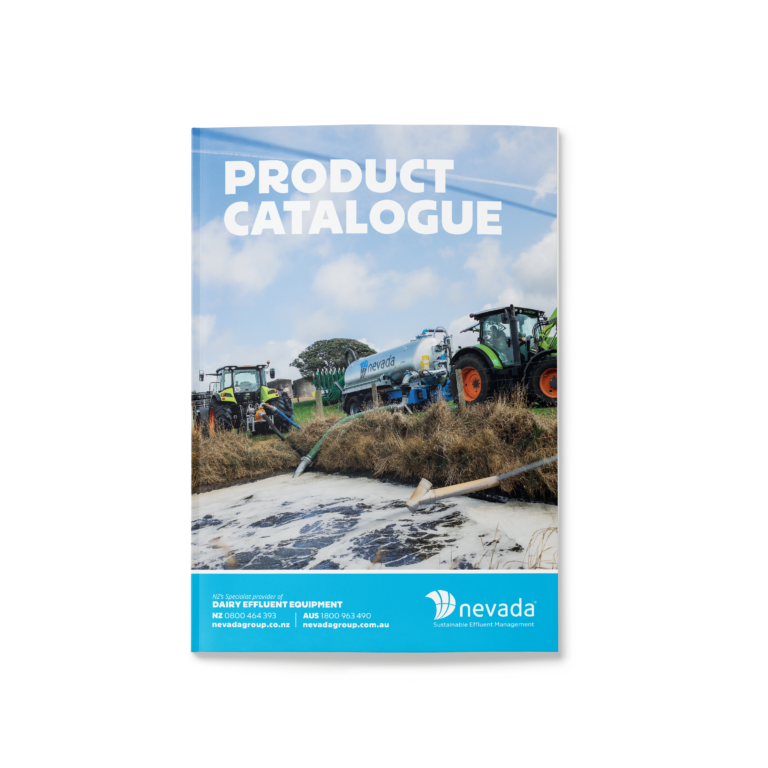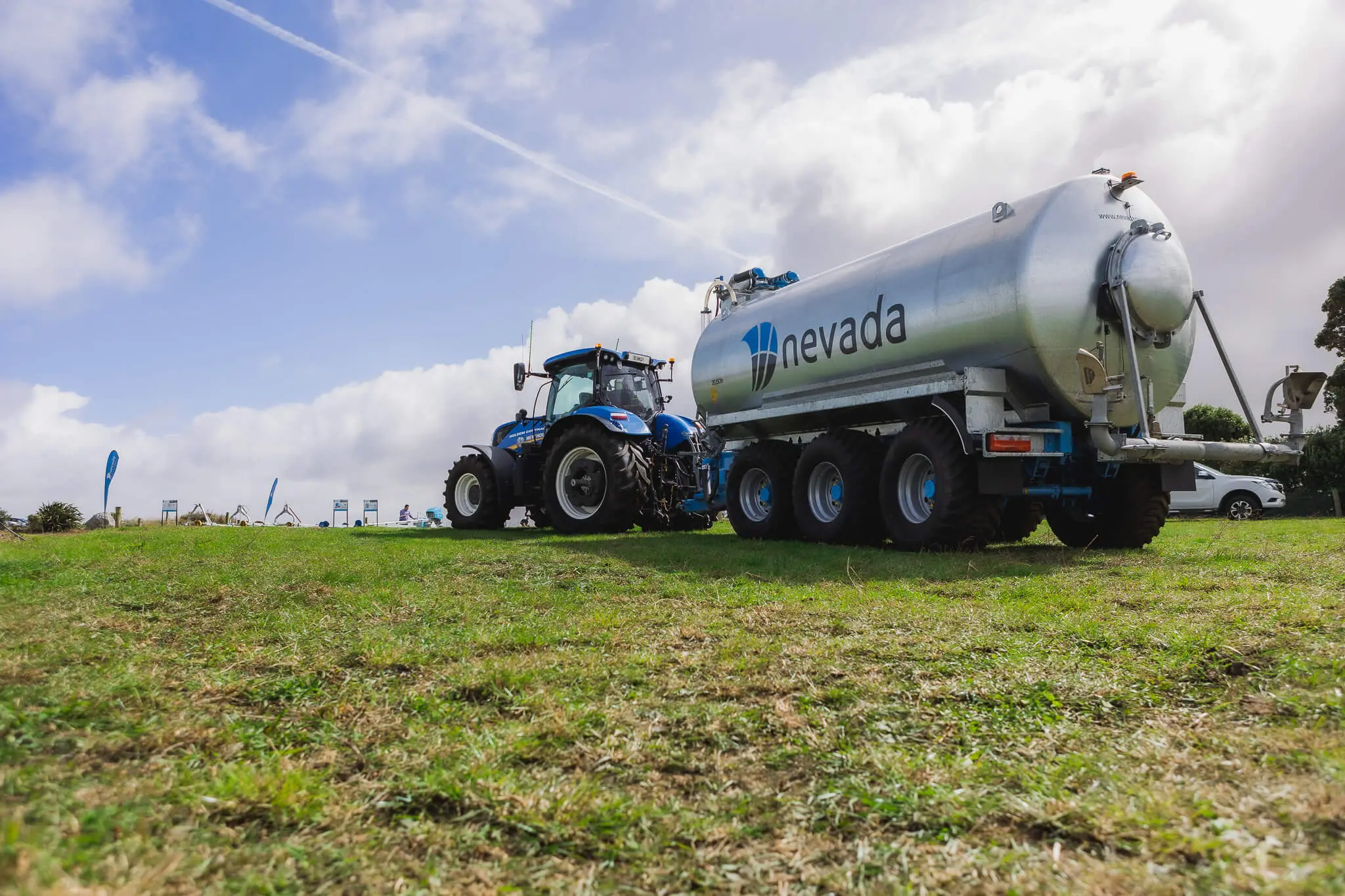- Sustainable Effluent Management
When looking at the amount of effluent storage you need for your dairy farm, it is recommended to go larger in size to future proof operations. If there is a plan for growth in the future, or if operations change hands, it creates long-term value on the property for dairy effluent management. It also can ensure that council compliance is met if the requirements change due to the evolving rules based on environmental impacts and agricultural productivity. Extra storage also provides a way to mitigate issues with extreme weather events that have been occurring more frequently. By reducing concern of overflow or not having enough storage during the rainy season when effluent cannot be spread, your dairy farm can reduce overall issues with storage and meet compliance without concern.
Often a bladder tank is the best choice when it comes to the available options due to the convenience, safety, and efficiency.
If your dairy farm experiences a high yearly rainfall, it is recommended to use a bladder tank before considering an above ground tank or pond. They are one of the most effective approaches on the market today for reduced issues with rainwater. With a diverter in place at the cowshed rainwater can be kept out of the bladder, creating more capacity for effluent to be stored, this also increases the nutrient value of your effluent for spreading.
Bladder tanks provide an advantage of safety if there are children present on the farm, as well as create less odour than other forms of storage.
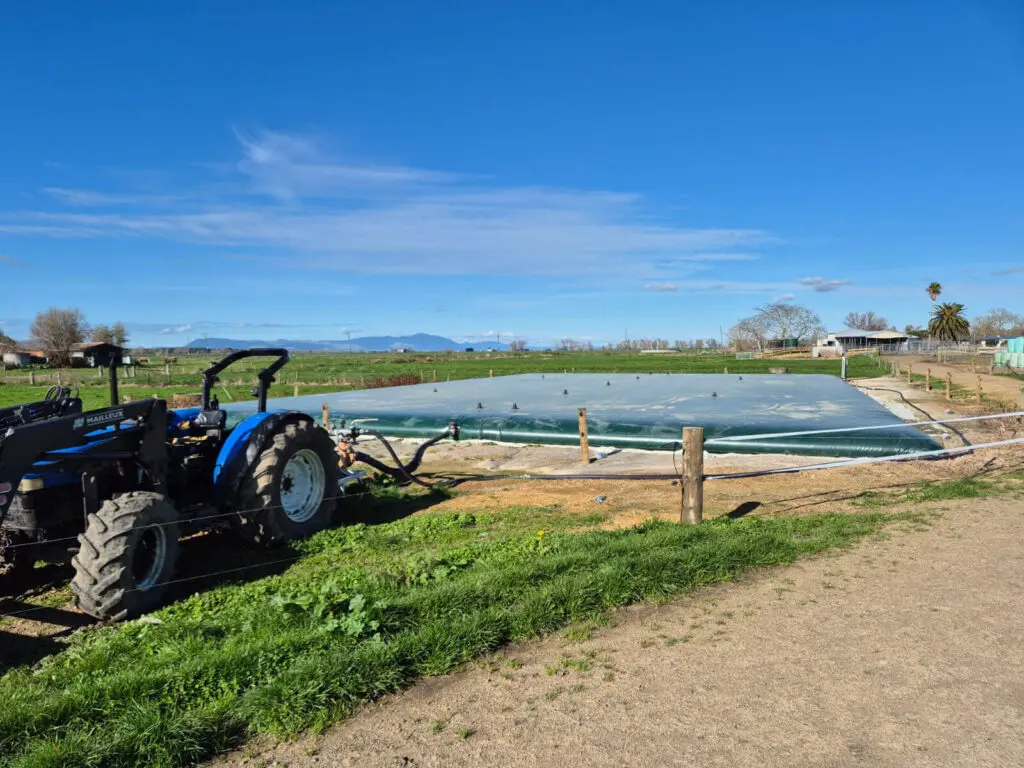
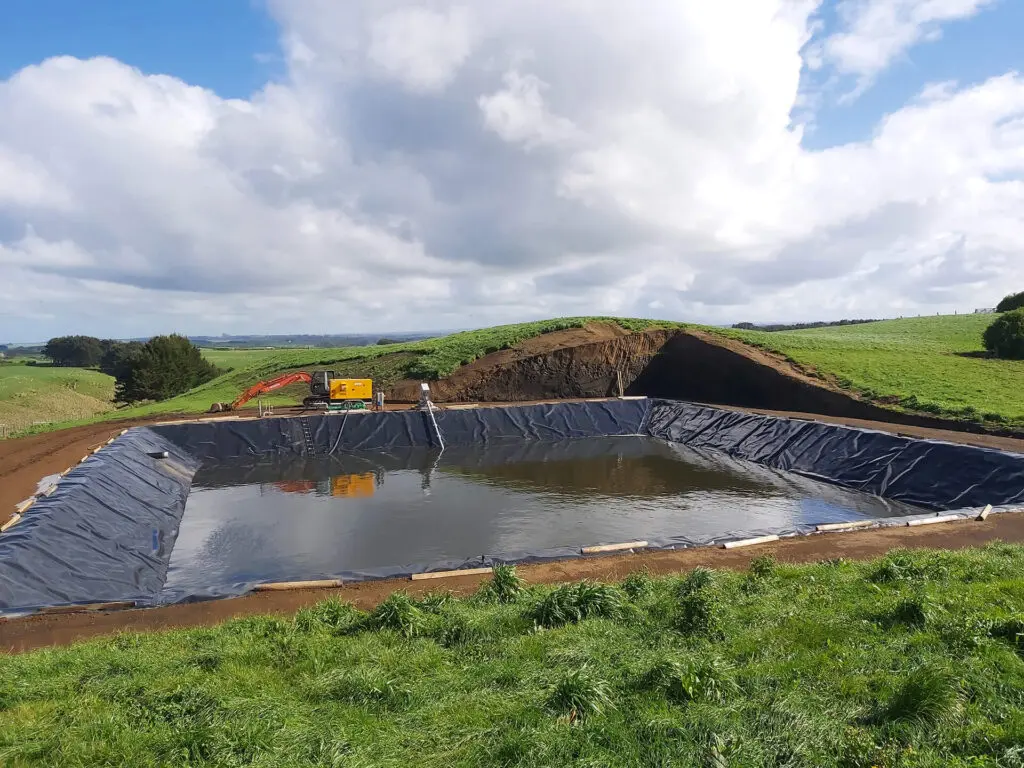
Synthetic lined ponds are popular due to the ability to see what is happening in the pond and the opportunity for easy maintenance of the facility. It is an effective approach to effluent storage. Keep in mind if you are upgrading an existing pond, the pond will need to be cleaned out thoroughly before lining and before it can be utilised for operations, which can be disruptive to some farms.
The potential issue with implementing a lined pond is the need for a resource consent and a building consent that is signed off by an engineer. This can take time and add up to be quite expensive during the initial process.
Above ground effluent storage tanks can be steel, plastic, or concrete. Concrete has been considered a good building material, but can be brittle over time and needs to be placed on solid ground. Plastic above ground tanks have a thin plastic liner and often feature a wall that is only two and half metres high, which does not offer the volume needed for larger operations. If there is high rainfall, there is an option to put a cover on the above ground tank to reduce the amount of rainwater the tank catches, but generally when above ground storage is required the recommended option is a flexible bladder effluent tank.
It’s important to assess the water table height, yearly rainfall and if your region gets earthquakes before considering which type of effluent storage system is right for your farm operations.
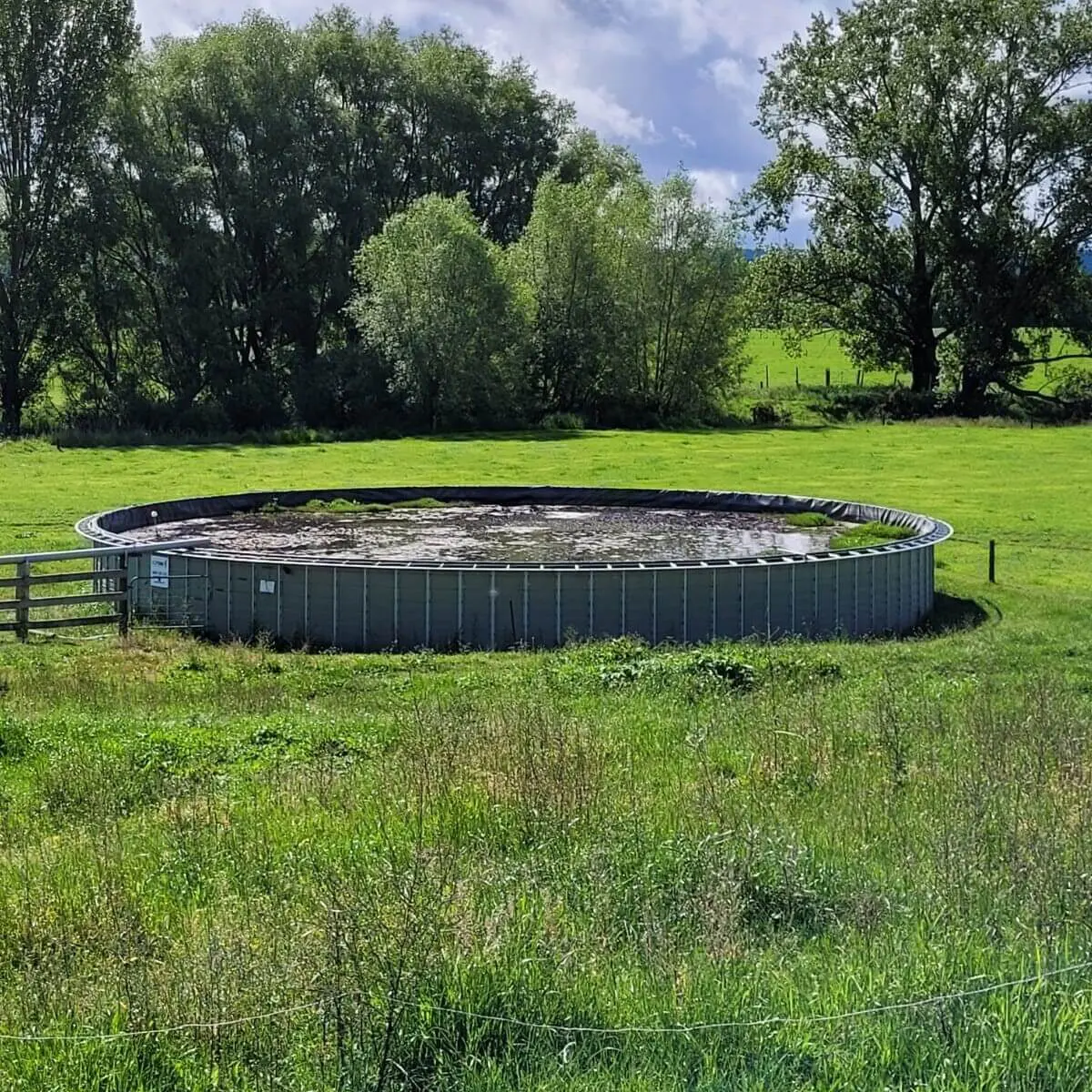
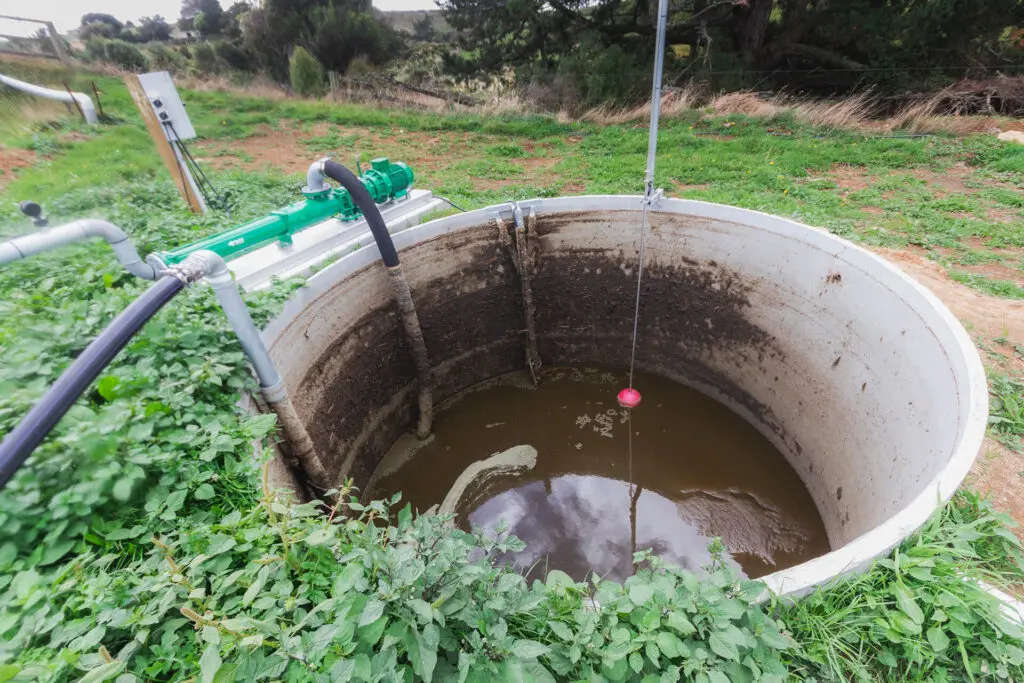
Effluent Sumps are often used as a transfer holding tank for effluent storage. Placed in-line from the cowshed, the wash-down flows into the sump after filtering through the stone-trap. From here the effluent can be pumped for irrigation or to a storage system such as a bladder or pond.
For greater durability, we recommend concrete effluent sumps constructed using a pre-cast concrete moulding process so you end up with just one piece – no potentially weak, leaky joints, and a more durable material than plaster or plastic.
When choosing a sump we look for a ‘set and forget’ situation, where you can be confident your effluent sump will be trouble free for years to come. Generally inground concrete tanks are smaller in volume.
Overall, a bladder tank is the easiest, fastest, simplest, and often the cheapest method. When considering what type of method is right for your operations, look at what type of terrain your farm has and what could streamline current operations. Chat with our team to learn more about what approach is the best for your effluent management system to simplify operations and run more efficiently.
"*" indicates required fields
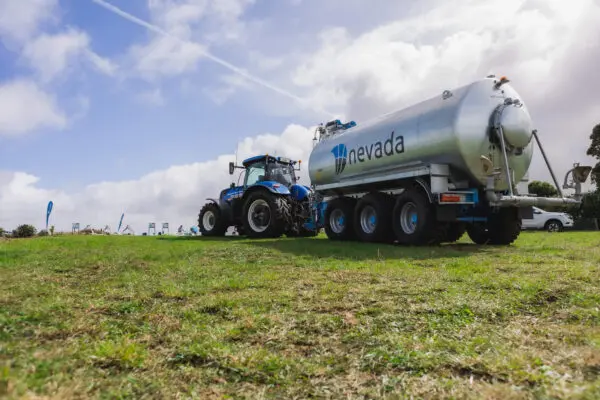
"*" indicates required fields

"*" indicates required fields

"*" indicates required fields
